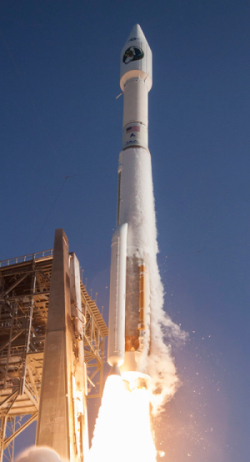The competition heats up: The CEO of ULA, Tory Bruno, said in an industry publication interview today that the Congressional deal that allows the company to buy 22 more Russian engines for its Atlas 5 clears the way for their eventual transition to the Vulcan rocket and an end to dependence on those Russian engines.
The article is worth a careful read, as it also provides a very detailed look at ULA’s future plans for its Atlas 5, Delta 4 Heavy, and Vulcan rockets. This paragraph was especially interesting:
The next major milestone is determining what engine will replace the [Russian] RD-180. Washington-based Blue Origin is developing the BE-4, a privately funded Liquid Oxygen (Lox) and Liquefied Natural Gas (LNG) engine capable of 550,000 pounds of thrust (lbf); and California-based Aerojet Rocketdyne is creating the AR1, a government-supported Lox/Kerosene (RP-1) engine capable of 500,000lbf. Either replacement will require two engines to match the power of the RD-180. Blue Origin claims its engine, already four years into development, will be flight qualified by 2017, while Aerojet Rocketdyne, having started its development later, says the AR1 will be flight qualified by 2019. Bruno said ULA would make its decision soon.
“Sometime close to the end of the year we are going to down-select, and then move into our Critical Design Review (CDR) and start manufacturing the rocket,” he said.
I strongly suspect they want to go with Blue Origin’s engine, because it is more powerful, farther along in development, and almost certainly less expensive. The question will be whether pressure from Congress, which favors Aerojet Rocketdyne’s engine for pork barrel reasons (Congress is funding it), will force ULA to go with it instead.

